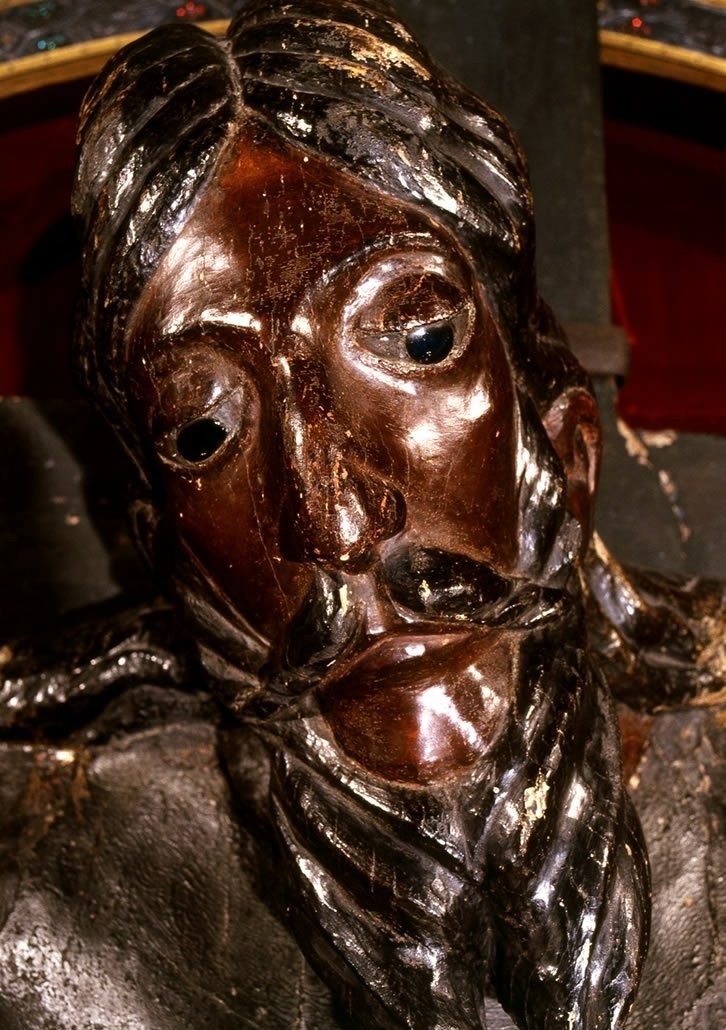
Volto Santo is a wooden crucifix kept in the Renaissance temple of Matteo Civitali in the Cathedral of San Martino in Lucca. Recent researches attribute the work to the last decades of the eighth and the beginning of the ninth century. The statue represents Christ in an upright position and with his head slightly reclined. His eyes are open and, for this reason, he takes up the iconographic subject of Christus triumphans. The body is covered by a long tunic that reveals only hands and feet. On the occasion of the procession, the statue is embellished with precious elements, including jewels, made by manufacturers belonging to a later age.
The history of “Volto Santo” - the Holy Face is shrouded in mystery and mysticism: it is one of the most ancient and venerated relics during the Middle Ages, which made the Cathedral of San Martino a practically obligatory stop for anyone crossing the Via Francigena.
According to the legend narrated by the deacon Leboino (or Leboinius), the crucifix was carved by Nicodemus with walnut wood, as he believed it would better convey the true likeness of Christ. It is said that Divine Grace itself completed the work by creating the face of Jesus. “Volto Santo “ - Holy Face was then hidden until the eighth century, when the place where the statue had been located was revealed to Bishop Gualfredo in a dream. The crucifix was embarked for Luni and, according to legend, neither the pirates nor the Lunese were able to get close to it. One night, the bishop of Lucca Giovanni I had an angelic vision that announced that he had to go to Luni, as only to him the boat of the relic would be granted.
In 782 the statue was then transported to Lucca and placed in the Church of San Frediano, before disappearing and then being found in the gardens near the Duomo (coincidence interpreted as a real miracle). After it was moved to the Cathedral of San Martino, where it is still kept today.











